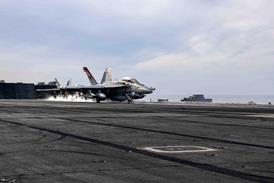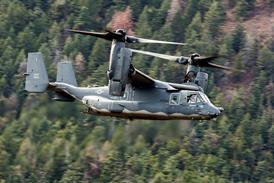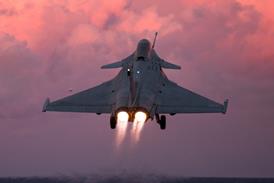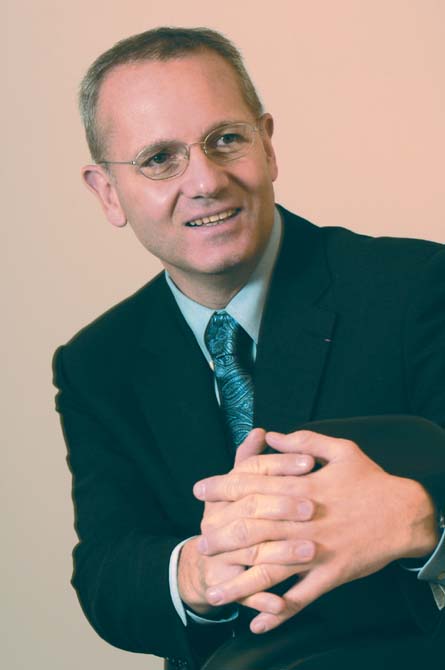By Helen Massy-Beresford in London and Graham Warwick in Washington DC
Arianespace’s chief executive Jean-Yves Le Gall has devoted his career to the European space industry. In his current role he is building on the foundations of the “important and impressive” year that was 2005 and looking forward to growing the business in the second half of the decade.
|
|---|
| Le Gall: three different lines of US launchers is too many |
Last year Arianespace passed several key milestones: it completed its Ariane 5 ECA return-to-flight plan, and qualified the ECA with a second successful launch – one of five last year including three basic Ariane 5Gs.
And Le Gall’s confidence about the business’s future does not seem misplaced: Arianespace and subsidiary Starsem, of which Le Gall is also chairman and chief executive, together boast the largest order book in the launch services industry, with 41 satellites to be launched by Arianespace and five by Starsem.Next year, Arianespace plans to launch five to six Ariane 5s per year for a total of 10-12 satellites. This is well ahead of competitors in the commercial launch market, which are hovering in the region of four single-satellite launches per year.
Further ahead, Le Gall says as many as eight Ariane 5 launches in 2008 are a possibility and that this could boost the space transport company’s turnover by 10-15%.
The company is pulling subsidiary Starsem, which is part-owned by Russian shareholders and EADS and offers commercial launches of the Soyuz, closer into the fold, and expects to have a “completely integrated three-launcher system” by 2009. This will include the European Vega small launcher under development. “Our objective is for 10 launches in 2010, a mix of all three – we will increase our revenues and our flexibility – Soyuz will bring business to Ariane, and vice versa.”
Le Gall, who joined Arianespace in 2001 as chief operating officer, becoming chief executive in 2003, says launch prices have risen 30% in the last two years. “For a given mass, customers are prepared to pay for quality. In the past, decreases in price may have led to decreases in quality – now everyone is convinced that quality has a price and that you have to pay that price.”
And his optimism extends further. Financially, the company appears to be back on track. In 2005 Arianespace balanced its books for the third year in a row, says Le Gall. “The market is better than was expected a few months ago.” Arianespace signed nine contracts last year, and 2006 “looks good – our launches have given customers confidence”. Out of a total of 20-25 orders forecast in 2006, Arianespace expects to take half.
“We are in a stabilised situation. We are now working with just three suppliers – EADS for Ariane, the Russians for Soyuz and ELV for the Vega. And we get ESA funds to cover some of the fixed costs of the Ariane system, the same as in the USA and Russia, so we are on a level playing field.” But he acknowledges that there is a need for caution in a market that is changing quickly and is being driven by two distinct areas of potential new business – high-defintion televsion, which “needs a lot of capacity in orbit so fuels the industry”, and the internet. “The key word is flexibility – things are changing.”
International co-operation is key, Le Gall says. Through Starsem, Arianespace offers Soyuz launches from Baikonur. “We use the same manifest for Ariane and Soyuz, so can transfer spacecraft between them. By selling more than one launch vehicle we can get the customer in orbit on time.”
The market is becoming increasingly open: “Russia is launching government satellites, which just a few years ago would have been unthinkable.” It is also becoming more commercial. But governments will continue supporting launch companies until the commercial market is big enough that they can be sure of launching their satellites, he believes.
“Ariane ECA is fitted to the market – the next [launcher] development will depend on what is decided at the ESA ministers meeting in 2008. We are working with ESA and industry to determine what our position will be by 2007 on the follow-on. ECA is the perfect tool,” Le Gall says.
Arianespace is diversifying – it was the first to offer insurance services to cover launches, then to offer financing. It is now providing a back-up solution through the Launch Services Agreement with Boeing and Mitsubishi.
Other programmes offer new opportunities: Arianespace is interested in participating in the NASA commercial crew/cargo services programme – the first European Space Agency Automous Transfer Vehicle (ATV) launch in spring 2007 will carry cargo to the International Space Station, and Le Gall expects Ariane 5 and a commercially operated ATV to have a role to play in sending payload to the ISS after the Space Shuttle is retired in 2010.
Other changes may open new doors for the France-based company: “The Boeing/Lockheed United Launch Alliance demonstrates that the US government wants to increase efficiency. There are three different lines of US launchers – Atlas V, Delta IV and Delta II – and this is too many,” Le Gall says. “The logic would be to downselect to one primary launcher – we will have to see which one.” But, he adds: “Increasing the global efficiency of the system is good for space, and good for us.”
Source: Flight International
























